The Parthian Empire, also known as Parthia, was a powerful force that once challenged the might of Rome, governing vast lands stretching from the Euphrates to the Himalayas. This captivating empire forged its own path, blending eastern and western cultures to create a unique identity. In the following sections, we’ll take a journey through the rise and fall of this remarkable empire, exploring its history, culture, economy, and lasting legacy.
Key Takeaways
- Parthia emerged in 247 BCE, led by Arsaces and the Parni tribe.
- Parthian rulers achieved a prosperous empire through decentralized governance and granting autonomy to local rulers.
- The Parthian Empire experienced a “Golden Age” of culture and economy due to its strategic location, military prowess, religious tolerance, innovative tactics against Rome’s legions, art & architecture reflecting cultural diversity.
Birth of the Parthian Empire
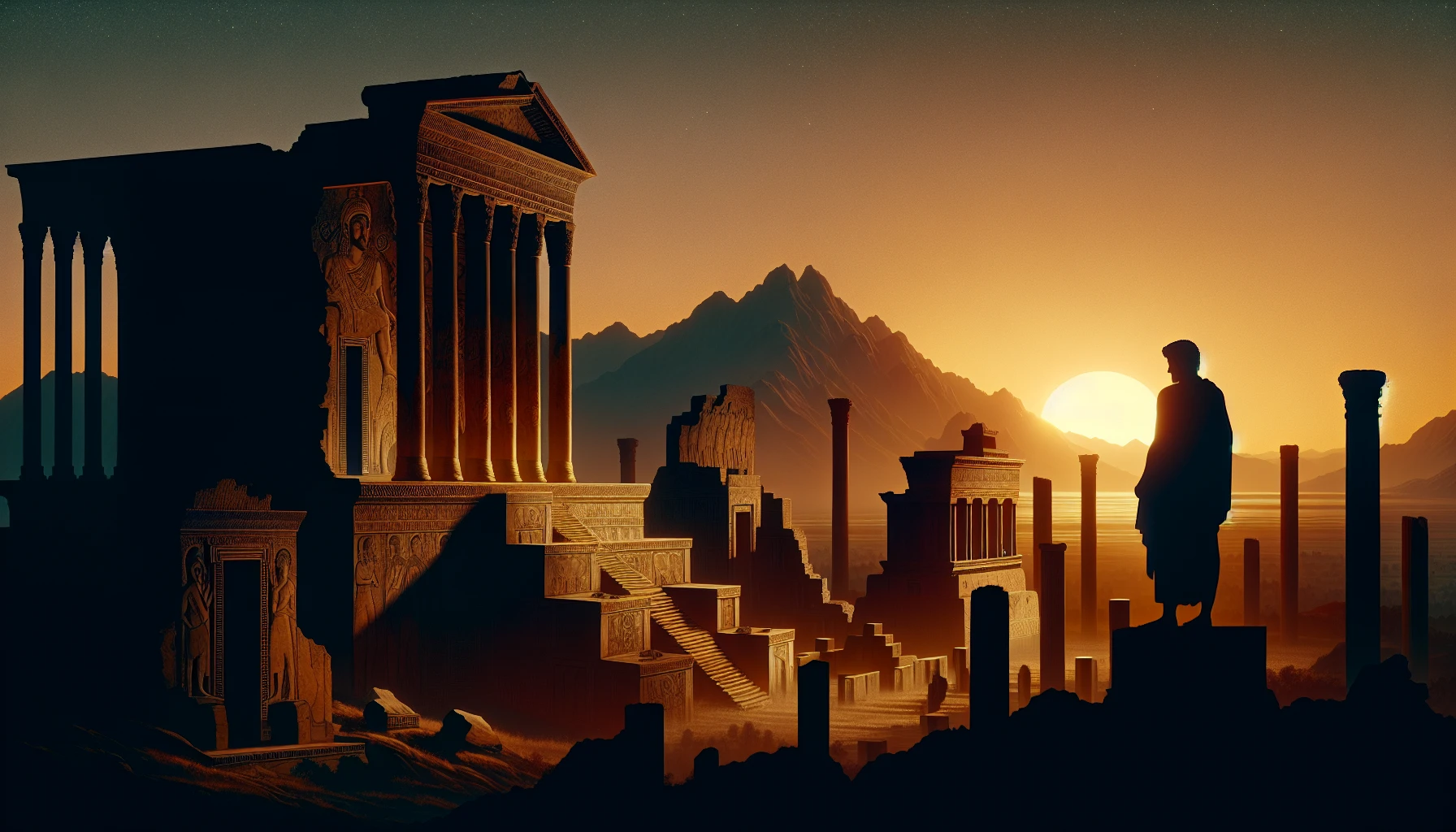
The Parthian Empire emerged in 247 BCE, marking the beginning of the Parthian era. Born from the ashes of the Seleucid Empire, the Parni tribe, led by Arsaces, seized control of the Parthian satrapy, establishing the Arsacid dynasty and laying the foundations for a powerful empire. The Arsacid Empire, as it was also known, would grow to span from the Mediterranean in the west to India and China in the east, as the Parthian Empire stretched across the vast Parthian territory, challenging the supremacy of Roman emperors from the Parthian throne.
The cause of the Parni and Arsaces gaining control of the Seleucid satrapy of Parthia remains uncertain. The exact sequence of events that occurred leading up to this power shift is unknown. However, it is clear that the Seleucid Empire’s prolonged conflicts with the Ptolemies of Egypt weakened its grip on its eastern territories. Unable to reconquer Parthia, the Seleucids were forced to watch as the Parni established their own empire, setting the stage for a new power to rise in the ancient world.
From Satrapy to Sovereignty
Under the leadership of the Arsacid kings, Parthia declared its independence from the Seleucid Empire and began to expand its territories. The empire conquered:
- the eastern kingdom of Bactria
- Media
- Assyria
- Babylonia
- Elam
under Mithradates I. In 140 BCE, the Parthians successfully counterattacked the Seleucids, culminating in the demise of the Seleucid monarch Antiochus VII Sidetes at the battle of Ecbatana. As a result, the Parthians established their dominion over the areas that had once constituted the Seleucid province of Parthia.
The Parni tribe, originally a nomadic people from Central Asia, gained control of Parthia when the local governor initiated a revolt against Seleucid rule. This event marked the beginning of Parthia’s journey from a satrapy to a sovereign empire, as the Arsacid kings led the way to expand and consolidate the empire’s territories.
Expansion Under the Arsacids
The Arsacid dynasty had a significant part in the expansion of the Parthian Empire, gaining control over extensive territories, including the core regions of the Achaemenid Empire. The Parthians’ territorial gains were a testament to the Arsacid kings’ military prowess and strategic leadership.
The conflict between Parthia and the Roman Empire, often influenced by the decisions of the Roman Emperor, was a key factor in shaping the empire’s history. The two powers were brought into conflict by their rival claims to the throne of Armenia, a kingdom situated between their respective empires. This ten-year war showcased Parthia’s military capabilities and often resulted in victories against the Roman legions, further solidifying the empire’s reputation as a formidable power in the ancient world.
The Parthian Rulers and Their Governance
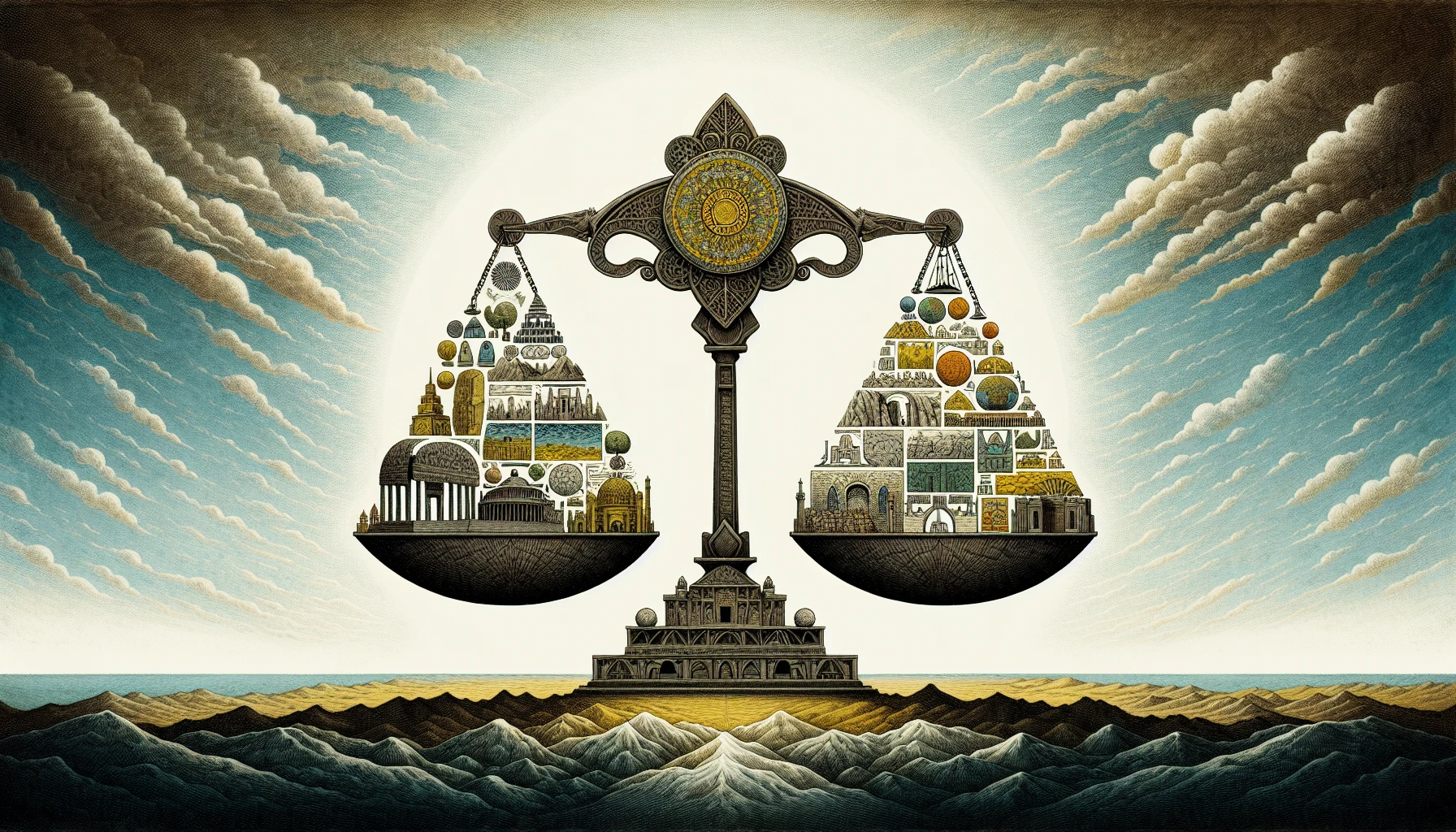
Parthian rulers, also known as parthian kings, governed their empire through a decentralized system, allowing local autonomy and maintaining a balance of power among various regions. This form of Parthian control relied on the significant role played by the Parthian nobility in the empire’s administration, with a three-tiered hierarchy comprised of regional kings, those related to the King of Kings through matrimony, and the heads of local clans and small territories.
This decentralized approach to governance enabled the Parthian rulers to create a stable and prosperous empire. By granting local rulers a degree of autonomy, the Parthians ensured loyalty and cooperation from the diverse cultures and regions within their empire.
The Arsacid Dynasty’s Leadership
The Arsacid kings were instrumental in ruling and expanding the Parthian Empire, with each king striving to consolidate the empire’s territories. Mithradates II and Phraates III were among the most influential leaders of the Arsacid Dynasty, making significant contributions to the empire’s growth and stability.
The succession process of the Arsacid Dynasty was not always consistent, yet the dynasty managed to remain in power until its overthrow in AD 224 by Ardashir. The rulers of the Arsacid Dynasty were referred to as the ‘King of Kings’ and purported to be the successors of the Achaemenid Empire, further illustrating their impact on the Parthian Empire and its place in history.
Decentralized Power and Local Autonomy
The Parthian Empire allowed for semi-autonomous kingdoms and satrapies, ensuring loyalty and stability within the empire. Local rulers, known as satraps, acted as autonomous regional governors and managed provinces within the empire, playing an integral role in the administration of their respective regions.
However, this decentralization of power also had its drawbacks, as it resulted in political decentralization and the introduction of local taxes by aristocrats, increasing the tax burden on the empire. Despite these challenges, the Parthian Empire’s governance system proved effective in maintaining a vast and diverse empire.
Parthia’s Golden Age: Culture and Economy
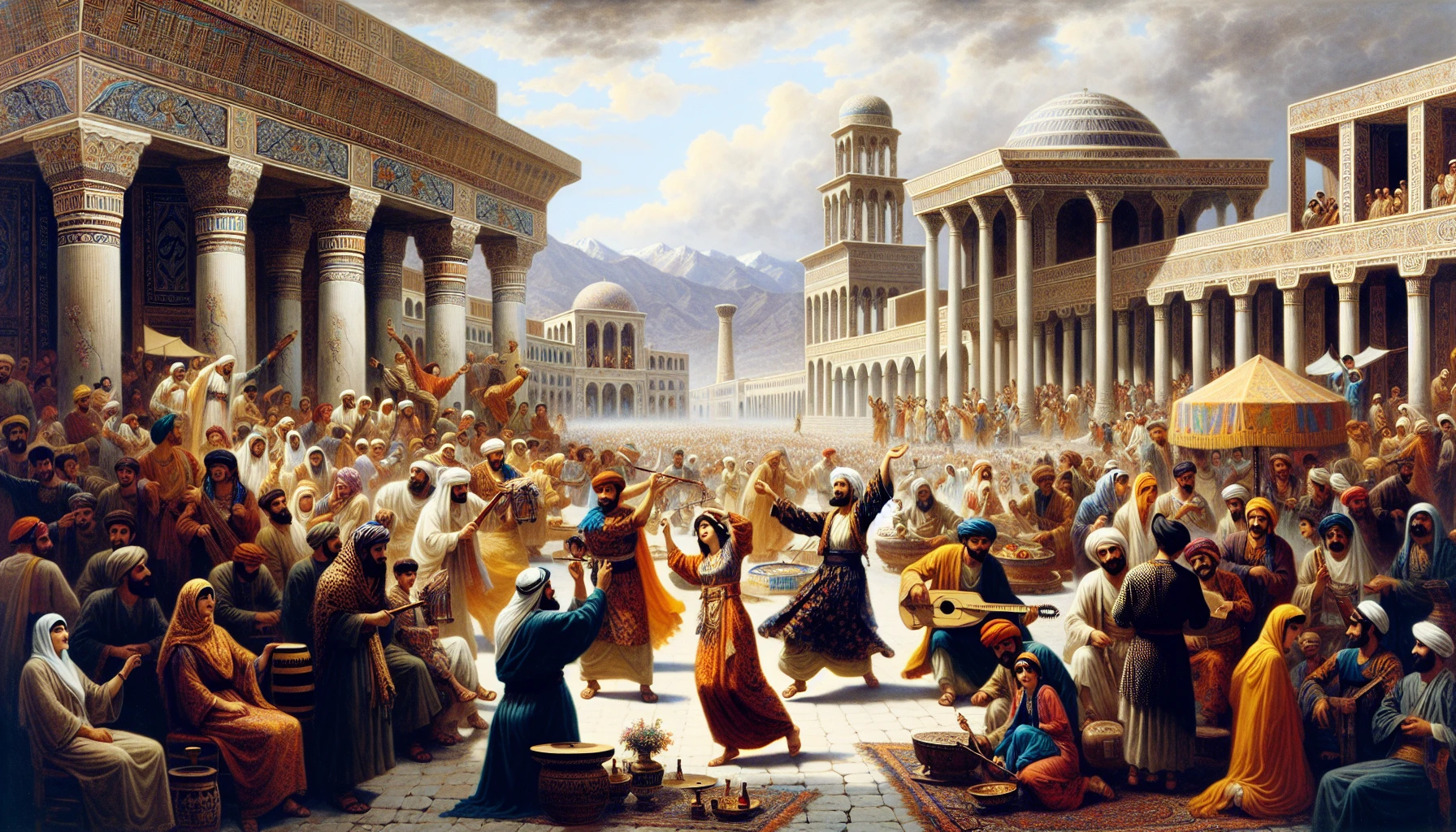
Parthia’s golden age was marked by a rich cultural blend and a thriving economy, thanks to its strategic location and control of trade routes. The empire’s culture was a melting pot of Greek, Iranian, and other influences, which allowed Parthia to maintain its unique identity while embracing the customs and beliefs of various regions within its domain.
Trade was a significant factor in Parthia’s economic prosperity, as the empire’s control of the Silk Road encouraged commerce with neighbouring empires, including Han China. This lucrative trade network allowed the Parthian Empire to amass wealth and resources, further solidifying its status as a major power in the ancient world.
Cultural Melting Pot
Parthia was a cultural melting pot, embracing Greek, Iranian, and other influences while preserving its own unique identity. The empire’s rulers and people were open to the customs and beliefs of various cultures, fostering an atmosphere of religious and cultural tolerance. This openness to new ideas allowed Parthia to flourish as a diverse, cosmopolitan empire.
The Parthian Empire’s artistic and architectural achievements were a testament to this cultural fusion. Parthian art and architecture combined elements from Greek, Persian, and regional styles, creating a distinct aesthetic that set the empire apart from its neighbors. This rich cultural tapestry is a key aspect of Parthia’s enduring legacy.
Economic Dominance Through Trade
Parthia’s strategic location along the Silk Road enabled it to:
- Dominate trade between the East and the West
- Facilitate commerce with neighboring empires, such as Han China
- Result in substantial economic benefits through the taxation of caravans
The wealth derived from trade had several significant impacts on the Parthian empire:
- It bolstered the Parthian economy.
- It allowed the empire to support a strong military.
- It enabled investment in works of art and architecture.
- It laid the foundation for Parthia’s golden age, showcasing the importance of trade and commerce in the empire’s rise to prominence.
Military Might and Tactics
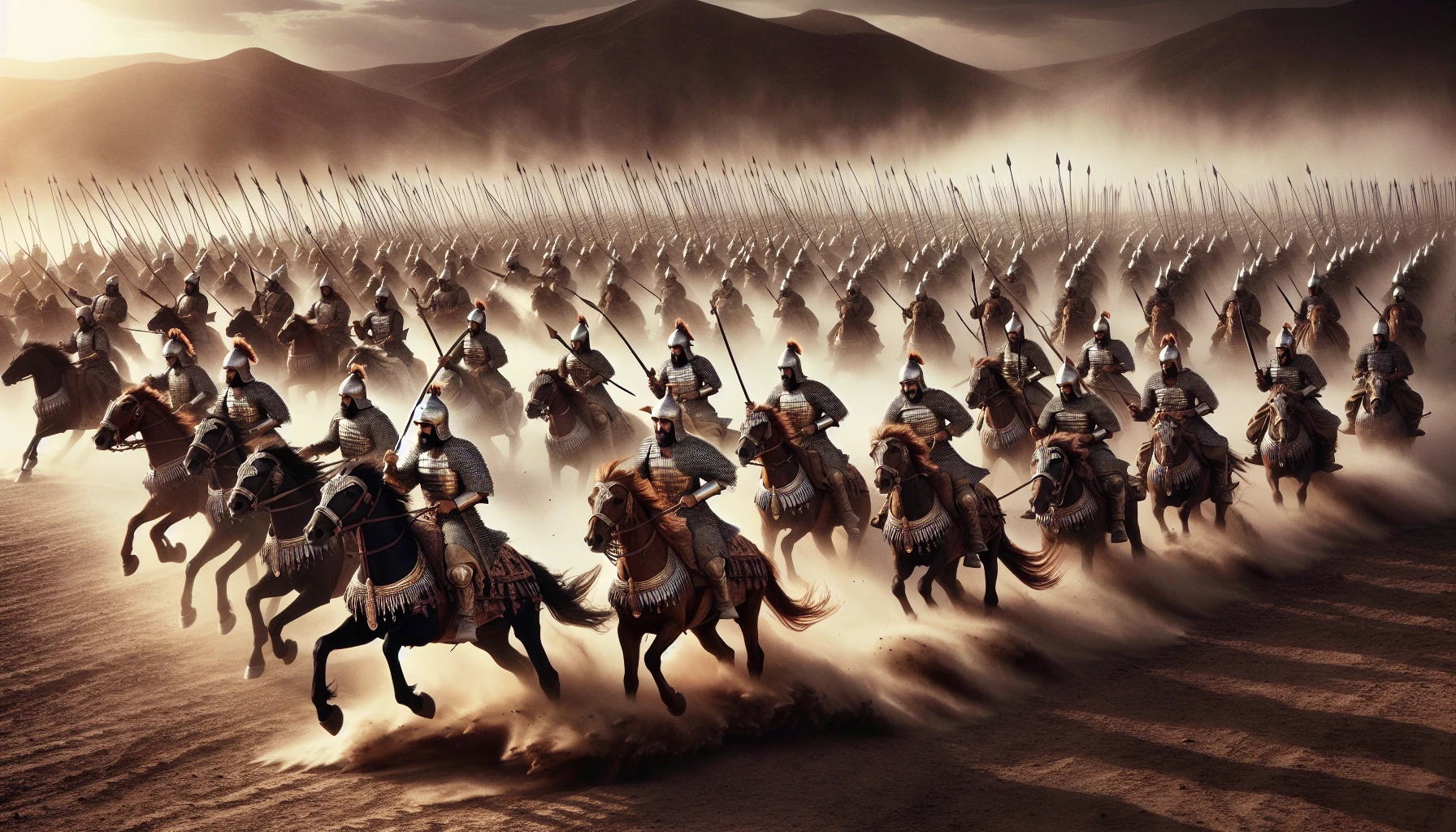
Parthia’s military strength was marked by its skilful cavalry and inventive strategies, which were successful against Roman legions. The Parthian army was composed mostly of cavalry, consisting of cataphracts and horse archers. These units formed the backbone of the empire’s military might, striking fear into the hearts of their enemies and ensuring Parthia’s dominance in the region.
Parthian military tactics often revolved around their exceptional equestrian skills and the use of bows in battle. The infamous “Parthian shot,” a maneuver in which horse archers would feign retreat before turning and firing a volley of arrows at pursuing enemies, exemplified the empire’s innovative approach to warfare. These tactics were instrumental in securing victories against the mighty Roman legions.
The Parthian Cavalry
The Parthian cavalry, consisting of cataphracts and horse archers, formed the backbone of the empire’s military might. Cataphracts were a type of heavy cavalry, noted as elite soldiers who were instrumental in the military successes of the Parthian Empire.
Horse archers, on the other hand, were known for their remarkable ability and lethal accuracy. They were incorporated into Parthian cavalry tactics by:
- Attacking enemy forces from all directions
- Leveraging their mobility and expertise in horseback warfare
- Using a hit-and-run approach to cause considerable damage while keeping their own losses to a minimum.
Conflicts with Rome
Parthia’s conflicts with Rome showcased its military capabilities, often resulting in victories against the Roman legions. The empire’s skilled cavalry and innovative tactics proved effective in battle, striking fear into the hearts of their enemies and securing key victories in the ongoing struggle for power in the ancient world.
These conflicts not only demonstrated Parthia’s military prowess but also highlighted the empire’s resilience in the face of seemingly insurmountable odds. Despite numerous setbacks and challenges, the Parthian Empire remained a formidable force in the region, resisting Roman incursions and emerging as a worthy rival to the greatest power of the ancient world.
Artistic and Architectural Heritage
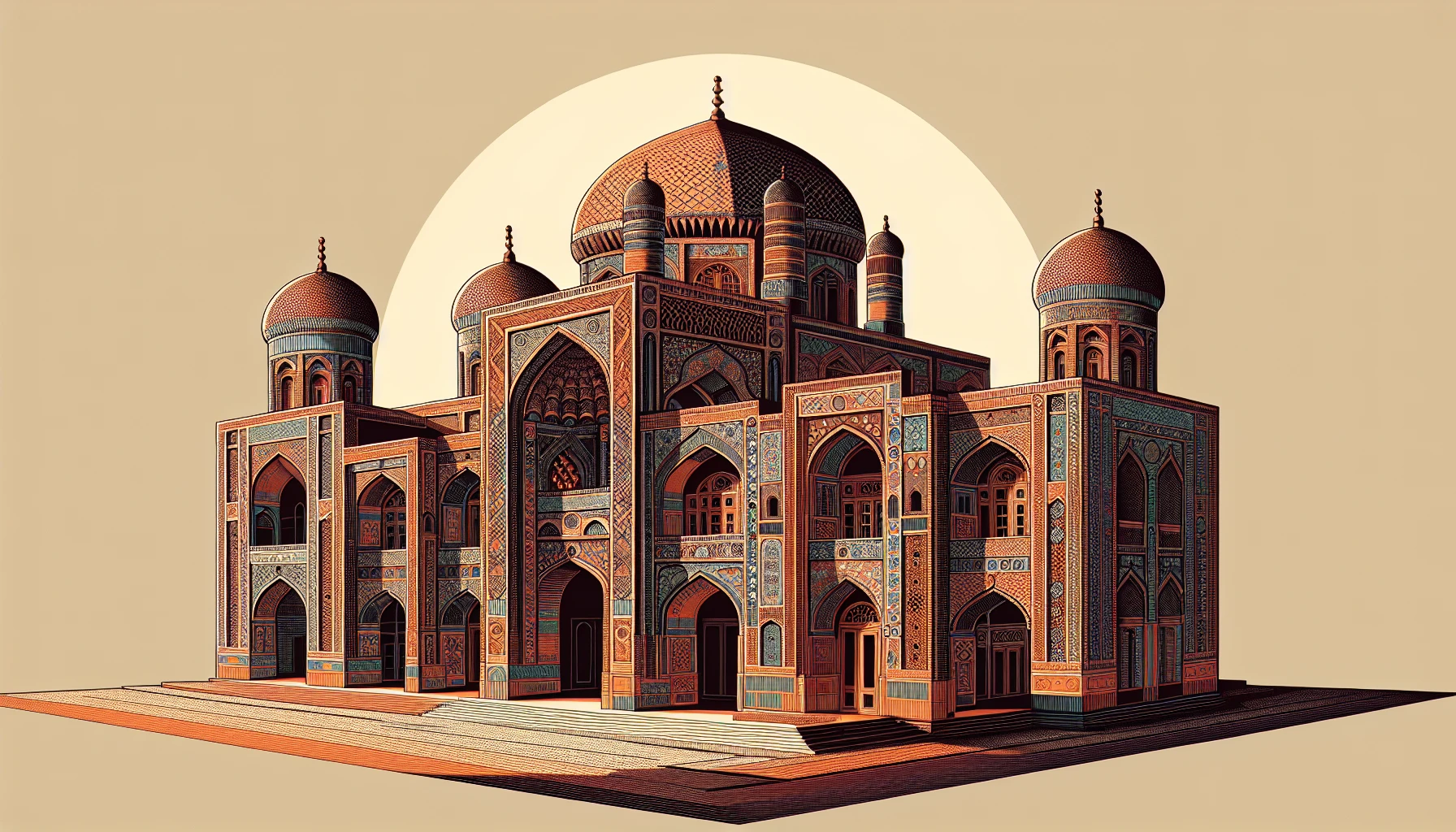
Parthian art and architecture, often found in a Parthian city, exhibited a mix of eastern and western influences, showcasing unique motifs and creative designs. The empire’s cultural fusion was evident in its artistic and architectural achievements, which showcased a remarkable level of craftsmanship and artistic value.
This rich artistic heritage was a testament to Parthia’s cultural diversity and the empire’s ability to draw upon various sources of inspiration. Parthian art and architecture not only demonstrated the empire’s wealth and power but also served as a lasting reminder of its unique place in the history of the ancient world.
Royal Insignia and Decorative Arts
Parthian decorative arts, such as jewelry and royal insignia, showcased the empire’s wealth and cultural diversity. The intricate designs and artwork often depicted the empire’s rulers, as well as various symbols of power and authority. These exquisite pieces of art reflected the empire’s prosperity and the diverse cultures that contributed to its rich heritage.
The craftsmanship and attention to detail in Parthian decorative arts demonstrated the empire’s commitment to preserving its unique identity while embracing the customs and beliefs of various regions within its domain. This harmonious blending of artistic styles and influences further solidified Parthia’s enduring legacy in the annals of history.
Architectural Innovations
Parthian architecture incorporated innovative designs and circular motifs, setting it apart from other contemporary styles. The empire’s architectural achievements were characterized by the blending of Greek, Persian, and regional styles, creating a distinct aesthetic that celebrated the empire’s diverse cultural influences.
Examples of Parthian architectural innovations include the use of sun-dried or kiln-baked bricks and vaults to roof buildings, as well as the incorporation of circular and frontal motifs in their architecture and art. These innovations not only demonstrated the empire’s technical prowess but also served as a lasting reminder of its unique contributions to the architectural traditions of the ancient world.
The Fall and Legacy of Parthia
The fall of Parthia was marked by internal strife and external threats, but its legacy endures through its cultural and military contributions. The empire’s decline was fueled by internal power struggles and costly wars with Rome, ultimately leading to the rise of the Sassanid Empire.
Despite its fall, Parthia’s influence can still be seen in various aspects of history, including its contributions to the Silk Road and its impact on Rome. The empire’s enduring legacy serves as a testament to the resilience and accomplishments of a once-great power that challenged the might of Rome and shaped the course of history.
Internal Strife and External Threats
Parthia’s decline was fueled by:
- Internal power struggles
- Costly wars with Rome
- Disputes over the succession of the Arsacid kings
- The massive drain on resources caused by protracted conflicts with Rome.
Ultimately, the rise of the Sasanian Empire dealt the final blow to the beleaguered Parthian Empire. The Sassanids, with their emerging power, almost completely erased the Parthian Empire from history, bringing an end to an empire that had once stood as a formidable rival to Rome.
Enduring Influence
Though the Parthian Empire ultimately fell, its influence can still be seen in various aspects of history, including its contributions to the Silk Road and its impact on Rome. The empire’s control of key trade routes facilitated commerce between the East and the West, laying the foundation for future economic opportunities and global connections.
Parthia’s military tactics and innovative approach to warfare also left a lasting impact on subsequent civilizations. The infamous “Parthian shot” and the empire’s skilled cavalry provided a unique contribution to the evolution of warfare during the ancient near world, demonstrating the enduring legacy of this once-powerful empire.
Parthian Coinage and Economy
Parthian coinage and economy showed a mix of Greek and Iranian influences, concentrating on trade and economic strategies. The empire’s monetary system was based on Greek drachma coins, which facilitated trade and economic growth within the empire.
These coins, adorned with intricate designs and artwork, often depicted the empire’s rulers and various symbols of power and authority. The use of standardized Parthian coins helped to:
- Create a dependable and extensively accepted medium of exchange
- Stimulate economic growth through facilitating commercial transactions
- Stimulate trade within the empire
Monetary System and Trade
The role of Greek drachma coins in Parthia’s monetary system was instrumental in facilitating trade and fostering economic relationships within the empire. The standardized coins provided a reliable medium of exchange, which enabled the empire to engage in commerce with neighboring empires, such as Han China, and profit from the lucrative trade between the East and the West.
This monetary system not only bolstered the Parthian economy but also allowed the empire to support a strong military and invest in works of art and architecture. The wealth derived from trade laid the foundation for Parthia’s golden age, showcasing the importance of trade and commerce in the empire’s rise to prominence.
Economic Policies and Impact
Parthia’s control of trade routes and its influence on neighboring empires played a significant role in shaping the empire’s economic policies and impact. The Parthian Empire maintained control over both the northern and southern trade routes in the Middle East, acting as intermediaries between Chinese silk producers and Roman manufacturers.
These economic policies had a profound effect on the economies of neighboring empires, as well as on the Parthian Empire itself. The establishment of commercial infrastructure and the maintenance of cities facilitated trade and commerce, allowing the empire to levy taxes on caravans passing through the Silk Road, thereby contributing to its financial success.
Parthian Religion and Beliefs
Parthian religion and beliefs demonstrated a syncretic approach, marked by religious tolerance and the emergence of Zoroastrianism. The empire’s culture was a melting pot of Greek, Iranian, and other influences, allowing Parthia to maintain its unique identity while embracing the customs and beliefs of various regions within its domain.
This religious tolerance and syncretic approach to belief systems fostered an atmosphere of harmony and cooperation within the empire, enabling the Parthians to manage a diverse and expansive realm that spanned from the Mediterranean to the Himalayas.
Syncretism and Religious Tolerance
Parthia allowed for a variety of religious systems and beliefs, blending Greek and Iranian deities while promoting religious tolerance. The empire’s rulers and people were open to the customs and beliefs of various cultures, fostering an atmosphere of religious and cultural tolerance.
This openness to new ideas allowed Parthia to flourish as a diverse, cosmopolitan empire. Parthian art and architecture combined elements from Greek, Persian, and regional styles, creating a distinct aesthetic that set the empire apart from its neighbors.
Zoroastrianism’s Rise
The rise of Zoroastrianism in Parthia laid the foundation for its prominence in the subsequent Sassanid Empire. The prevalence of Zoroastrianism during the Parthian period in Parthia, existing in tandem with other faiths such as Mithraism, played a significant role in shaping the empire’s religious landscape.
The emergence of Zoroastrianism in Parthia is credited to its acceptance as the empire’s state religion. This religious movement established the basis for the future significance of Zoroastrianism in the region and played a pivotal role in shaping the cultural and spiritual identity of the Parthian Empire.
Summary
The Parthian Empire was a remarkable force in the ancient world, challenging the might of Rome and forging its own unique path. From its inception as a small satrapy to its rise as a vast empire spanning from the Mediterranean to the Himalayas, Parthia’s history is a testament to the resilience and accomplishments of a once-great power. Blending eastern and western cultures, embracing religious tolerance, and showcasing innovative military tactics, the Parthian Empire’s enduring legacy serves as a reminder of the immense impact a single civilization can have on the course of history.
Frequently Asked Questions
What country is Parthia today?
Parthia is an ancient land located in present-day northeastern Iran and Turkmenistan. It was originally bordered by the Kopet Dag mountain range in the north, and the Dasht-e-Kavir desert in the south, and was also known for its Parthian language. Today, Parthia corresponds to the modern region of Khorsn in Iran.
Did Rome ever defeat Parthia?
Yes, Rome successfully defeated Parthia in the Parthian War of 161-167 CE, culminating with Lucius Verus taking the title Parthicus Maximus.
Who are the Parthians in the Bible?
The Parthians were an ancient nomadic tribe called the Parni, thought to be of Scythian descent and located southeast of the Caspian Sea. They initially formed part of the Seleucid Empire before gaining independence and forming their own. Various stories exist about their origin, with Moses of Chorene citing Abraham’s son Keturah as their ancestor.
Who destroyed Parthian Empire?
In 226 CE, Ardashir I, a Persian prince from Fars, overthrew the last Parthian ruler and destroyed the Parthian Empire. He replaced it with the more centralized Sassanid Empire.
What led to the rise of the Parthian Empire?
The Parthian Empire’s rise to prominence was facilitated by the decline of the Seleucid Empire and the Parni tribe, led by Arsaces, taking control of the Parthian satrapy and forming the Arsacid dynasty.
